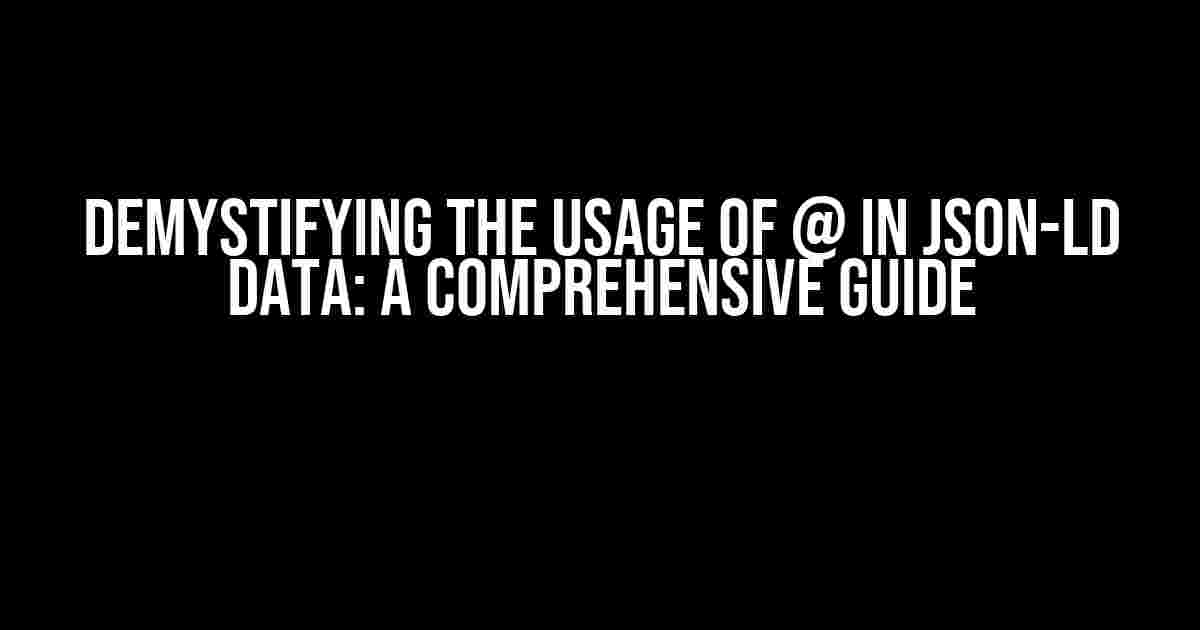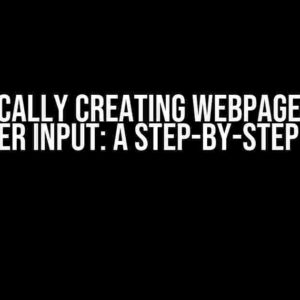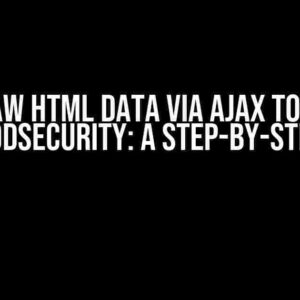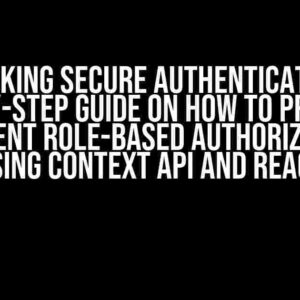Hey there, webmasters! Are you tired of dealing with the mysteries of JSON-LD data and the enigmatic “@” symbol? Well, fear not, dear reader, for we’re about to embark on a thrilling adventure to unravel the secrets of the “@” symbol in JSON-LD data. Buckle up, and let’s dive into the world of structured data!
What is JSON-LD, and why do we need it?
JSON-LD (JavaScript Object Notation for Linked Data) is a lightweight data format used toserialize structured data. It’s a powerful tool that helps search engines, like Google, understand the content of your website and provide users with richer search results. But, why do we need JSON-LD? Well, the answer is simple: to improve search engine rankings and visibility.
By embedding JSON-LD data into your website’s HTML, you’re providing search engines with explicit clues about your content, such as:
- Entity relationships
- Event details
- Business hours
- Reviews and ratings
- And many more!
The enigmatic “@” symbol: What does it do?
The “@” symbol is an essential part of JSON-LD syntax. It’s used to identify and reference specific vocabulary terms, such as schema.org types and properties. Think of it as a shorthand way to reference complex concepts and relationships.
{
"@context": "https://schema.org",
"@type": "Restaurant",
"name": "Bistro 123",
"image": "bistro123.jpg",
"address": {
"@type": "PostalAddress",
"streetAddress": "123 Main St",
"addressLocality": "Anytown",
"addressRegion": "CA",
"postalCode": "12345-6789",
"addressCountry": "USA"
}
}
In the above example, the “@” symbol is used to:
- Reference the schema.org vocabulary context ( “@context”: “https://schema.org” )
- Specify the type of entity ( “@type”: “Restaurant” )
- Define the address as a PostalAddress type ( “@type”: “PostalAddress” )
Common usage of the “@” symbol in JSON-LD
The “@” symbol is used extensively in JSON-LD data to reference various concepts and relationships. Here are some common scenarios:
Referencing vocabulary terms
When defining a property or type, you can use the “@” symbol to reference a specific vocabulary term. For example:
{
"@type": "Book",
"name": "The Great Gatsby",
"@id": "http://example.com/books/the-great-gatsby"
}
In this example, the “@type” property references the Book type in the schema.org vocabulary, while the “@id” property provides a unique identifier for the book.
Defining graph nodes
In JSON-LD, a graph node is an object that represents a single entity or concept. The “@” symbol is used to define the node’s type and properties. For example:
{
"@type": "Event",
"name": "Concert",
"startDate": "2023-03-01",
"endDate": "2023-03-02",
"location": {
"@type": "Place",
"name": "Theater 123"
}
}
In this example, the Event node has a location property that references a Place node, which is defined using the “@” symbol.
Specifying data types
The “@” symbol can be used to specify the data type of a property. For example:
{
"@type": " Person",
"name": "John Doe",
"birthdate": {
"@type": "Date",
"@value": "1990-02-28"
}
}
In this example, the birthdate property is defined as a Date type, with a specific value of “1990-02-28”.
Best practices for using the “@” symbol in JSON-LD
When working with JSON-LD data, it’s essential to follow best practices to ensure consistency and accuracy. Here are some tips:
- Use the correct vocabulary terms: Make sure to use the correct schema.org vocabulary terms to define your data. This ensures that search engines can accurately interpret your data.
- Use the “@” symbol consistently: Use the “@” symbol consistently throughout your JSON-LD data to reference vocabulary terms and define graph nodes.
- Validate your data: Use validation tools, like the Google Rich Results tool, to ensure your JSON-LD data is correctly formatted and error-free.
- Keep it simple and concise: Avoid complex and nested data structures. Instead, break down your data into smaller, more manageable pieces.
Conclusion
The “@” symbol may seem mysterious at first, but once you understand its purpose and usage, it becomes a powerful tool in your JSON-LD arsenal. By following the best practices outlined in this article, you’ll be well on your way to creating accurate and effective JSON-LD data that improves your website’s search engine rankings and visibility.
Remember, the “@” symbol is not just a symbol; it’s a gateway to the world of structured data. Unlock its secrets, and you’ll unlock the full potential of JSON-LD data.
| JSON-LD Term | Description |
|---|---|
| @context | Specifies the vocabulary context for the data |
| @type | Specifies the type of entity or concept |
| @id | Provides a unique identifier for the entity or concept |
| @value | Specifies the value of a property |
We hope this comprehensive guide has helped you demystify the usage of the “@” symbol in JSON-LD data. If you have any further questions or concerns, feel free to ask in the comments below!
Frequently Asked Question
Get clarity on the @ symbol in JSON-LD data with these frequently asked questions!
What does the @ symbol represent in JSON-LD data?
The @ symbol in JSON-LD data represents a keyword that defines the context of the data. It’s a special character that helps JSON-LD parsers understand the meaning and relationships between the data.
Can I use the @ symbol as a property name in JSON-LD data?
No, the @ symbol is reserved for keywords in JSON-LD data and cannot be used as a property name. Using it as a property name can lead to errors and make your data invalid.
How does the @ symbol affect the processing of JSON-LD data?
The @ symbol triggers the processing of JSON-LD data, allowing parsers to understand the data’s context and semantics. It enables the generation of RDF triples, which are then used to create a graph of data that can be queried and reasoned about.
Can I use the @ symbol in multiple places within a JSON-LD data structure?
Yes, you can use the @ symbol in multiple places within a JSON-LD data structure, as long as each instance is used to define a keyword or context. This allows for more complex data structures and relationships to be represented.
Is the @ symbol specific to JSON-LD data or can it be used in other data formats as well?
The @ symbol is specific to JSON-LD data and is not used in other data formats. Its use is defined by the JSON-LD specification and is an essential part of the data format.





